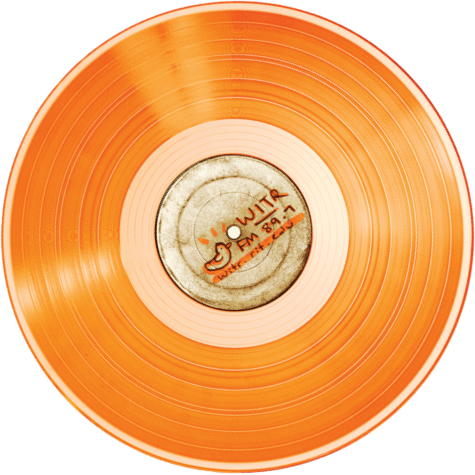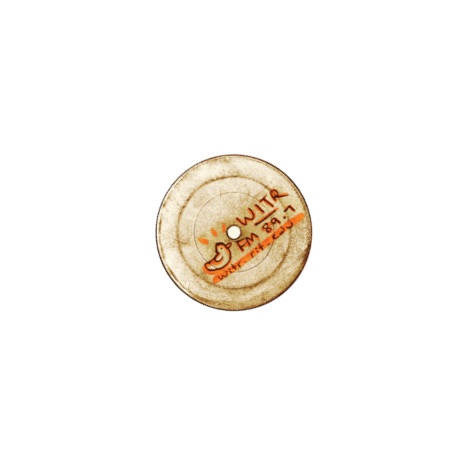WITR
Julianna Upham, a second-year illustration major, joined RIT’s college radio station because of her passion for music. But being in a community with like-minded people from across the university is what keeps her engaged.
“It’s easy to connect with people through music,” said Upham, from Chester Springs, Pa. “The station really brings you together and helps you see how much you have in common with someone you’ve just met.”

Joining a community of like-minded people with a passion for music is what draws most students to the station, according to Julianna Upham, left, and Sejjemba Magoye, right.
Photos by Traci Westcott
Nestled in the basement of the Student Alumni Union (SAU), the WITR radio station space is a treasure trove of music, personalities, and nostalgia. The station and the music have greatly evolved since its first broadcast in 1961, but one thing has remained constant: the tight-knit network of students and alumni.
The opportunity to make connections on such a large campus is what drew Sejjemba Magoye to WITR from the small town of Golden, Colo.
“It’s one of those things that is so easy to stumble into, and then it becomes such a serious part of your college experience,” said Magoye, a second-year game design and development major.
Upham and Magoye are just two of the hundreds of community members, past and present, who keep the station’s airwaves flowing.
Keep reading to discover some of the station’s student-led projects, on-air personalities, and brains behind the technology.
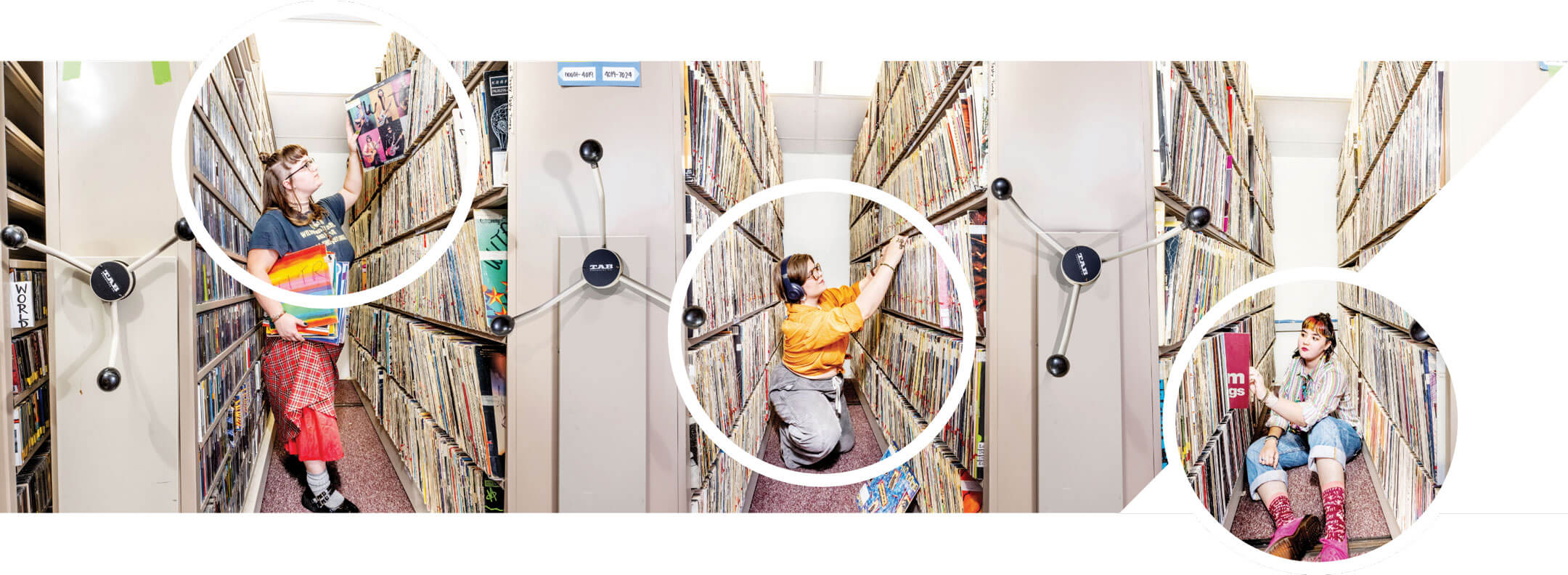
The variety of genres and station history housed in WITR’s music library is a source of inspiration to draw from when curating radio show playlists. It even inspired some student-led projects in recent years. From left: Mikayla Stolarsky, Caitlin McCabe, and Riley Mason.
Photo by Traci Westcott
WITR’s music library contains over 80,000 CDs and vinyl discs. Fourth-year student Riley Mason was enthralled by the collection when she became a member of WITR.
“Access to the library is a really big selling point for members to join, but in practice, finding specific items in the collection wasn’t easy,” said Mason, from Mililani, Hawaii. “It was like an adventure every time you went in there.”
This past spring, Mason and Caitlin McCabe ’24 (museum studies and history) embraced their background as museum studies students and created a new cataloging system to better document what was in the library.
The collection’s genres range from alternative music to jazz, rap, country, reggae, metal, and beyond—truly embodying the station’s tagline, “modern music and more!”
McCabe said that the variety within the collection reflects the many students who helped build it through the years.
“It’s like the layers in sandstone. It’s a physical manifestation that shows what genres were really popular among our students at all the different points of time since the station first began,” said McCabe.
As the pair dug into their project, it sparked other members’ interest. Some wanted to help with the library cataloging, and others, like Emma Nastro ’24 (museum studies), were motivated to learn more about WITR’s history.
After finding copies of past WITR program guides in the RIT Archives, Nastro felt inspired to revive them. While they started as an advertisement for the station, members added their own spice to the guides over the years by including illustrations, inside jokes, and campus commentary.
“You could tell how much history and community was in the station when reading the old guides, and we wanted to share our own story,” said Nastro, from Oceanside, N.Y.
In December 2023, WITR started releasing new program guides, distributed exclusively in print at select locations around campus—an homage to the guides’ origins. Now that Nastro has graduated, Mikayla Stolarsky is taking the lead on editing and producing the new guides.
“It’s incredible to be able to take this part of the station’s history and give it a new life,” said Stolarsky, WITR member and fourth-year individualized program major studying design and studio art, from Newton, N.J. “If people have half as much fun reading the guides as we have making them, it’s all worth it.”
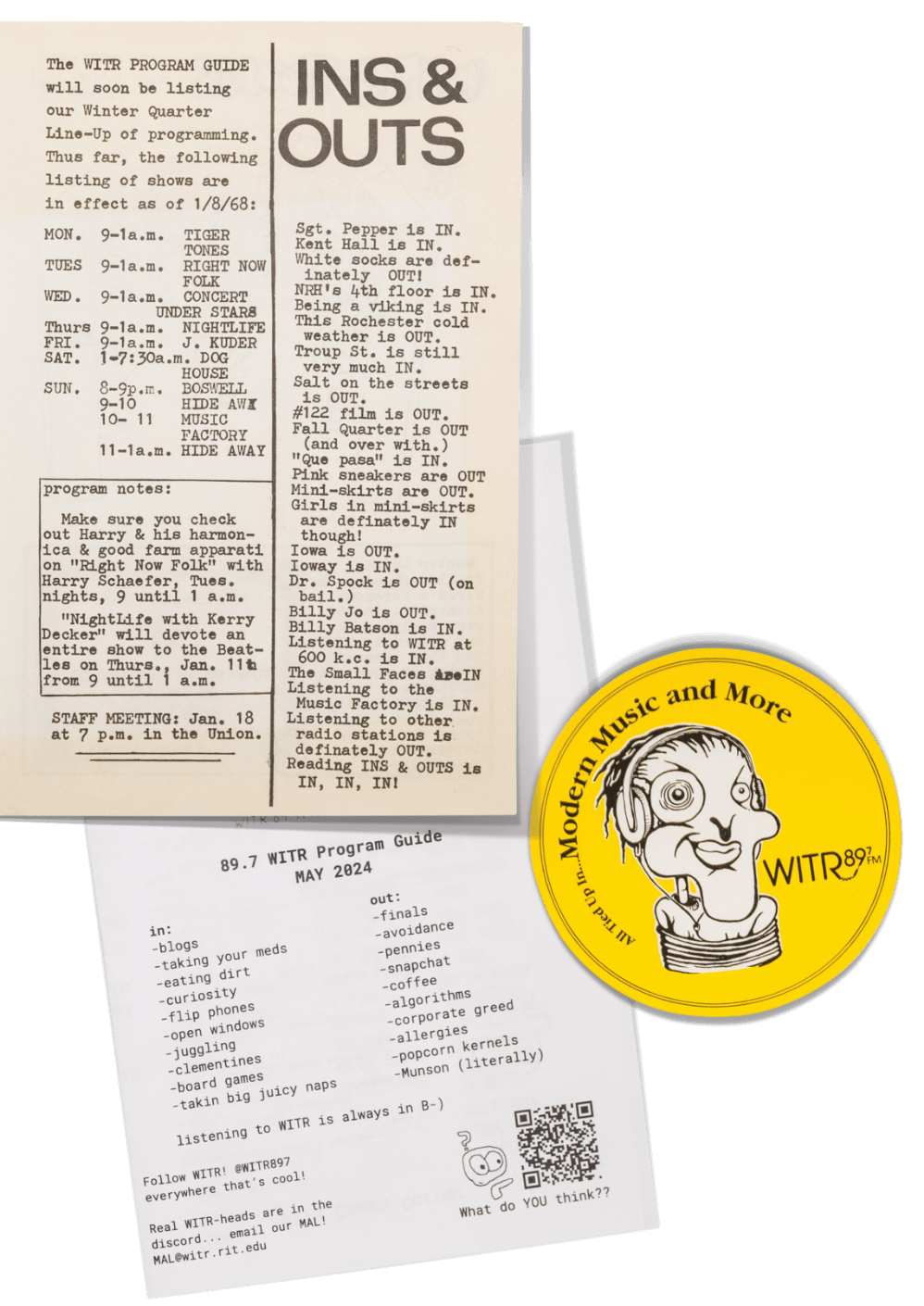
Ins and Outs
Ins and Outs
WITR’s program guides have always contained helpful information, like specialty show schedules and event dates, but the more exciting elements showcased the station’s culture. Silly comics, inside jokes, “Top 20 Tunes” lists, and editorial commentary gave others a glimpse into the community of students that ran the station.
When reviewing older program guides, current station members were particularly interested in the “Ins and Outs” sections, which explained what was and wasn’t considered popular at the time. Here is a comparison of the “Ins and Outs” from 1968, top, and 2024, bottom.
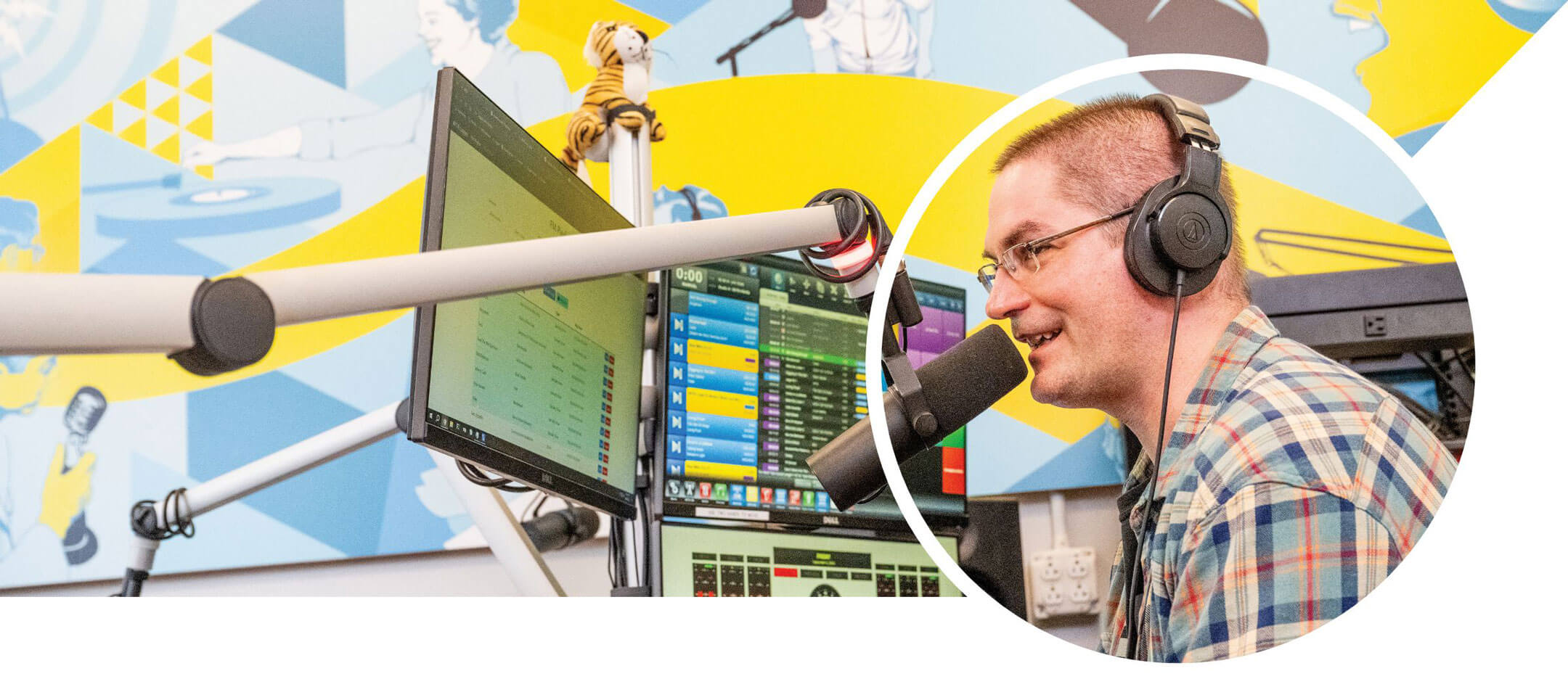
While Erik Golen made his WITR debut in 2020, he has over 15 years of experience working as a DJ.
Photo by Traci Westcott
Erik Golen ’03 (computer engineering), ’09 Ph.D. (computing and information sciences), senior lecturer for Golisano College of Computing and Information Sciences, made his DJ debut on WITR in March 2020.
Known on air as “DJ Boston Erik,” Golen hosts That Flannel Show, a specialty ’90s grunge and alternative program that broadcasts every Friday from 9 a.m. to noon in Studio X, which opened in 2015 on the first floor of the SAU. Below, he shares insights on being a DJ.
How does one become a DJ at the station?
Typically, you start by training with the station’s program director. They teach you what you should and shouldn’t do on air and the general flow for a show. Then you can host shows on the WITR Underground, which streams on our website. To host a show on FM radio in Studio X, you have to create and pass a two-hour demo show.
How do you curate a show?
I like to do themed sets. Sometimes they’re inspired by a listener’s request, other times I’ll do band tributes. I usually start the show with my own selections to give people time to tune in for their requests. After the show, I document the playlist so I can track what I’ve played. I try to not repeat songs too much other than “Cheesecake Truck” and “Closing Time,” which are weekly staples.
Can you still play CDs and vinyls from the music library on air?
We have three CD players that are connected to our soundboard. When you load up a CD, you pick a track, and it sits there waiting until you press the fire button. Some DJs still play a ton of vinyl, so we also have two turntables so you can have one vinyl spinning while you load up the next one.

Remy Rattner got a glimpse of WITR’s tech on top of Mark Ellingson Hall as a first-year student. Above, he works at the site with Alex Polge ’24 (computing and information technologies), left, a WITR technical adviser.
Photo by Traci Westcott
The station engineers may be invisible to the audience, but their behind-the-scenes efforts ensure that music flows freely.
Remy Rattner joined WITR’s engineering department during his first year at RIT. Now, as chief engineer, he helps his team oversee “anything that plugs in” at the station. This includes managing the equipment and playback systems in both of WITR’s broadcast studios, the station’s website and its servers, the transmitter site at the top of Mark Ellingson Hall, and more.
“Our priority is ensuring that our on-air product has the best sound possible. It’s the driving force behind everything we do,” said Rattner, from Greenwich, Conn.
Many of the engineers come from RIT’s computing college, but anyone who is willing to learn can work with the team. Rattner himself is a third-year management information systems major, which is based in Saunders College of Business.
In recent years, the engineering team has embarked on projects big and small, including renovating and rebuilding both of WITR’s broadcast studios.
Former chief engineer Mike Vasile ’22 (computing and information technologies), who currently serves as a WITR station adviser, initiated projects that brought the station’s systems up to industry standards, including replacing equipment to produce a higher quality sound and increase the reach of the station’s broadcast. He now works as a computer support administrator at RIT.
“The ability to work on something like this that the average person doesn’t get to see is really special,” said Vasile. “I think all of my experiences working at the station as a student taught me valuable lessons that I still use in my current job.”

Alumnus Michael Lambert recently returned to campus to get a tour of WITR’s upgraded facilities. From left: Lambert, Mike Vasile, Remy Rattner, and Gavin Webster.
In addition to the over 60 current members of the station, WITR has an impressive cohort of alumni. Three shared what they were listening to as students.
Michael Lambert ’74 (photography)
Founder and chairman of Lambert Media Group in Los Angeles
What artists were on your playlists?
Joni Mitchell, James Taylor, The Doors, The Rolling Stones, and a lot of folk rock.
Why did you want to be part of WITR?
Being able to put WITR on my resume helped me get my job at Viacom. It’s a great opportunity for current students.
Ken Huth ’88 (professional photographic illustration), aka DJ Adam
Professional photographer and owner of HuthPhoto in Durham, N.C.
What artists were on your playlists?
Dead Kennedys, The Clash, The Cure, Joy Division, and the Ramones.
Why did you want to be part of WITR?
They were the tastemakers, exposing people to new music and easing them into something cooler than mainstream radio.
Rick Kittles ’89 (biology), aka DJ Playzay
Professor and senior vice president for research at Morehouse School of Medicine in Atlanta
What artists were on your playlists?
KRS-One, EPMD, Run-DMC, Queen Latifah, Rakim, and a lot of MC Lyte.
Why did you want to be part of WITR?
WITR had an iconic presence on and off campus and brought a sense of belonging and community.









